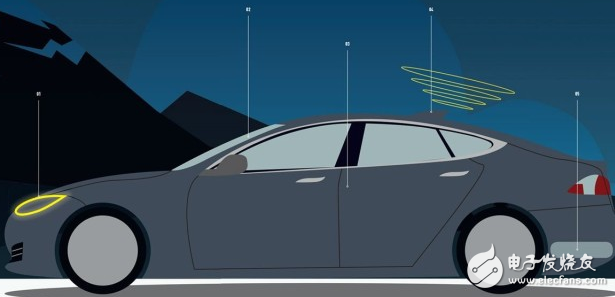There's always a trend on the horizon. Whether it's in manufacturing, mobile phones, or the automotive industry, there are always key technologies that can shape the future. Today, we're diving into what the next decade might bring to the automotive world and exploring the top five technologies that could become mainstream in the coming years. Predictions are never 100% accurate. If you look back at the predictions from the 1950s, many of them were way off — imagine if we were all flying cars today! The Peak isn't blindly optimistic. Instead, it takes a closer look at labs and emerging technologies, trying to identify which innovations will truly take off in the next ten years. Here are the top five automotive technologies that The Peak believes will shape the future of driving. Considering poor weather and seasonal conditions, cars spend about a quarter of their time driving in the dark. Why have automakers been slow to upgrade headlights? It turns out, they’re finally catching up. Manufacturers are now focusing more on lighting systems, with some already implementing advanced solutions. Audi and BMW have introduced high-intensity laser headlights that reflect light for better visibility. LED headlights are also becoming more common, allowing drivers to selectively turn off certain lights without affecting others. Looking ahead, future vehicles may feature innovative lighting systems using ultra-small LEDs, enabling more creative and bold designs. Augmented Reality (AR) has been around for a while, but its application in cars is still in early stages. However, the windshield offers a perfect canvas for integrating AR technology. Head-up displays are already in use, but they’re limited to showing speed and navigation. The next step is to enhance this by overlaying real-time environmental data onto the driver’s view. For instance, if a collision is imminent, the system could display a red warning. Lane changes could be shown in green. Companies like Harman, Continental, and Visteon are already testing similar concepts, pushing the boundaries of what's possible in vehicle interfaces. Carbon fiber-reinforced plastic (CFRP) is stronger than steel and aluminum, offering faster performance and better fuel efficiency. It was first used in Formula 1 in the 1980s, and by 1992, a McLaren sports car reached speeds of 391 km/h using this material. Despite its advantages, CFRP remains expensive due to complex manufacturing processes. As a result, it's only found in high-end or limited-edition models. However, as research and development costs decrease, and stricter emissions regulations push automakers to innovate, we may see more widespread use of this material in the near future. Modern cars are increasingly capable of autonomous driving, with features like adaptive lane-changing and speed adjustments. However, public trust and regulatory challenges have slowed the adoption of full self-driving technology. V2V (Vehicle-to-Vehicle) communication could change that. By allowing cars to "talk" to each other, safety can be significantly improved. For example, if a car runs a stop sign, it could send a warning signal to nearby vehicles, triggering automatic braking to prevent collisions. According to the National Highway Traffic Safety Administration, V2V technology could reduce accidents by up to 79%. Since the 1950s, the standard car electrical system has remained largely unchanged. But with the rise of advanced technologies, the 12-volt system is struggling to keep up. Enter the 48V system, which offers greater power and efficiency. The Volkswagen Group has already implemented this in models like the Audi SQ7, reducing turbo lag and improving acceleration. Bentley uses a similar system to control the anti-roll bar, enhancing driving comfort. Automakers are also exploring "mild hybrids," where a 48V system provides smoother power delivery and lower costs compared to full hybrid systems.
Why the Glass wall curtain led display can lead the fashion of outdoor media?
The LED Glass curtain display appeared as an sudden emergence on the outdoor media market.
With the advantages of encapsulation technology, high brightness, wide viewing angle, adjustable screen area and easy installation, The transparent led glass display has gradually replaced the traditional billboards, light boxed, etc., And become the high-profile new force for outdoor advertising media. At the same time, a small pitch is applicable to the glass wall led screen and led glass screen for window. There`re various types of led display products suitable for glass wall and glass window, such as Transparent led display and led strip curtain screen. As if, indoor and outdoor led curtain wall display has become a leading industry for led display market
Led Glass Display,Led Display For Glass Window,Outdoor Transparent Led Display,Glass Wall Led Screen Shenzhen Priva Tech Co., Ltd. , https://www.privaled.com
Headlights
Displays and AR Integration
Advanced Body Materials
V2V Communication
48V Electrical Systems